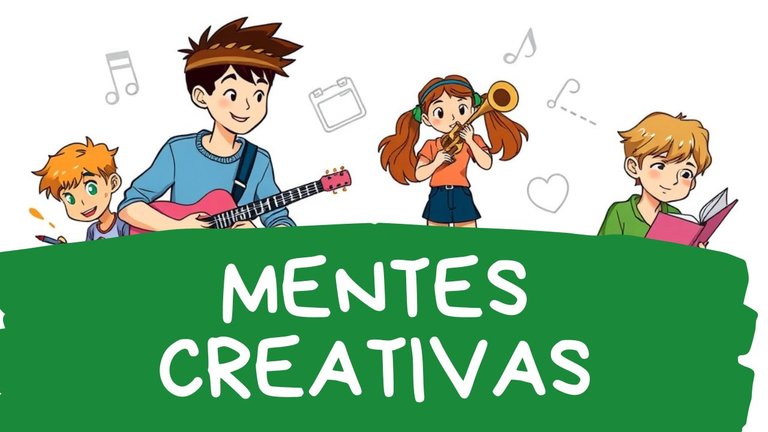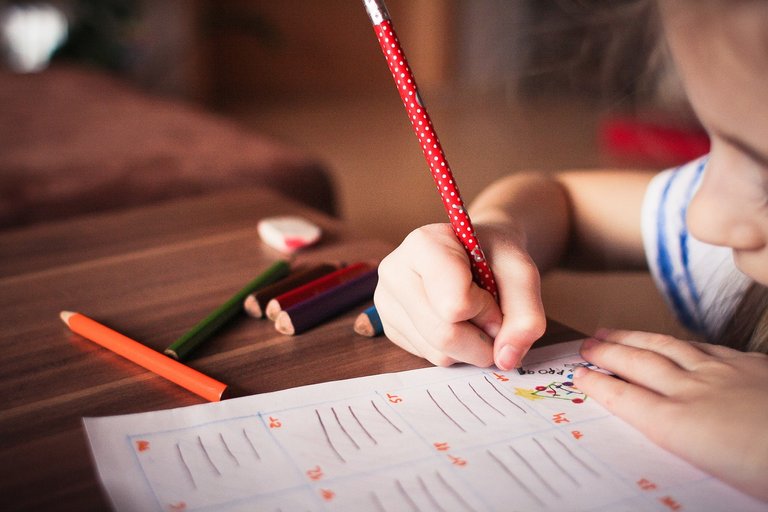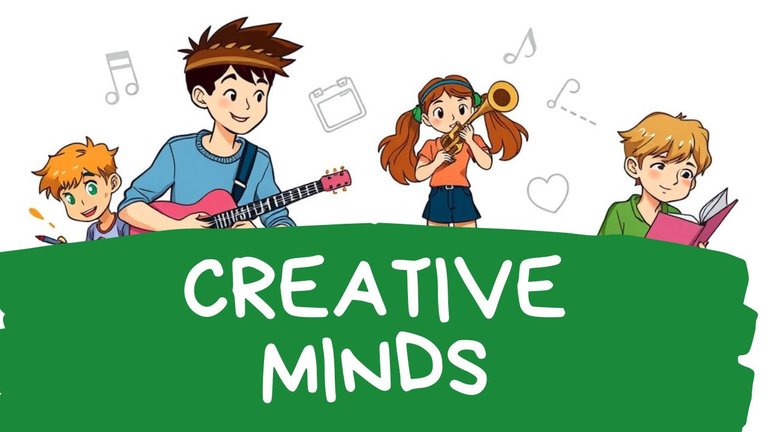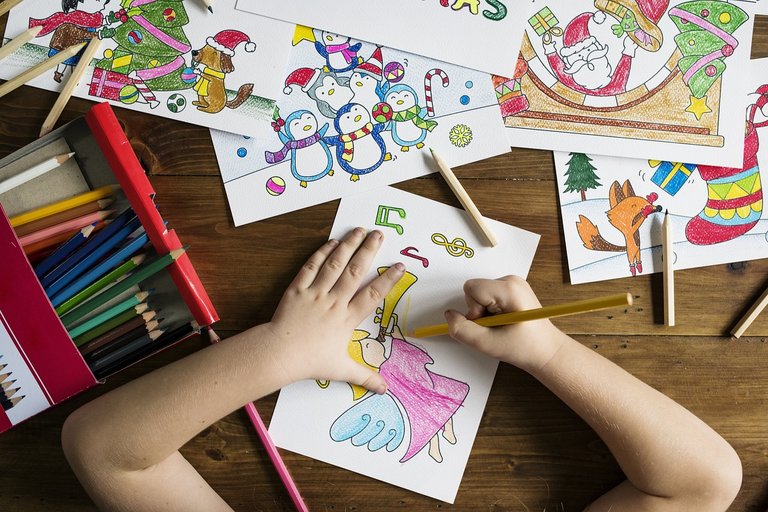El mundo cambia, cambia de forma muy rápida, y en medio de ese cambio a veces atrapados están nuestros niños y pre-adolescentes. En estas edades, el comportamiento ante el cambio puede ser bastante incontrolable y particular para cada persona. Pero, ¿qué podemos hacer desde las casas y el aula para mejorar la adaptabilidad ante el cambio y enfrentar la vida de la forma más positiva? Para mí, la respuesta es bastante sencilla: creatividad.

Como profesor, he tenido la suerte de ver cómo las actividades creativas, en cualquiera de sus manifestaciones, ayudan a que los niños se desarrollen de forma positiva e impactan en su conducta y en la forma en que se comportan con otros niños, padres, maestros y la sociedad en general. La creatividad da herramientas que nos preparan para enfrentar la vida con seguridad y habilidades indispensables. En estos momentos me encuentro trabajando sobre el tema y quiero que estas palabras sirvan como análisis rápido y una síntesis de algunas conclusiones.
 |
|---|
| Image by free stock photos from www.picjumbo.com from Pixabay |
El primer paso fue buscar, a través de encuestas, entrevistas y observación participante, algunos beneficios de las actividades creativas. Para esto, se tomó una muestra representativa de niños y pre-adolescentes por separado. Una de las conclusiones más interesantes es cómo, entre más temprano se comienza a incentivar a los niños a participar en cualquier manifestación creativa, más sostienen el interés a lo largo del tiempo, con beneficios muy reconocibles. Se destaca un muy buen desarrollo cognitivo, siendo los alumnos que practican actividades creativas los que más participan en las clases y los que mejores notas académicas presentan.
El factor social es otro punto determinante, ya que muchas de las actividades creativas tienen un punto fuerte en lo social, en compartir logros y habilidades. Los alumnos que han trabajado en proyectos creativos en conjunto (murales, talleres artísticos, bandas, coreografías, teatro) son los que mantienen una comunicación más efectiva y amplia. Desarrollan un vocabulario vasto y son muy buenos en hacer entender a las personas sus inquietudes y necesidades.
Todo esto es un pequeño extracto de un proceso continuo de investigación que tendré que desarrollar durante el año en curso como parte de mi investigación. Tendré que obtener como resultado una estrategia efectiva para fomentar la creatividad en el aula. Por el momento, entre mis ideas más fijas se encuentran talleres con padres y tutores legales, porque muchos, después de encuestados, le quitan peso a las actividades creativas y se la dan a otras disciplinas como las matemáticas y la lengua. Si los niños y pre-adolescentes no encuentran un ambiente de apoyo, estas actividades creativas se vuelven difíciles para ellos, sobre todo porque requieren de preparación y recursos.
Las actividades creativas van mucho más allá de la clásica pintura y música. Puede ser tejer, hacer manualidades, escribir poesía, hacer juegos tanto digitales como tradicionales, incluso el origami. Las aulas están llenas de mentes activas que quieren y aman explorar nuevas experiencias. Es nuestro deber nutrir esta creatividad para tener un futuro exitoso. La creatividad impulsa el progreso; fomentar la creatividad es invertir en el futuro y en las oportunidades.
Perdonen por una entrada tan distinta, pero se me hacía necesario como un ejercicio personal.

Quiero agradecerles sinceramente por tomarse el tiempo de leer este artículo. Su apoyo significa mucho para mí y me motiva a seguir compartiendo contenido que pueda ser útil e interesante para ustedes. Si encontraron este artículo útil o disfrutaron leyéndolo, les agradecería enormemente sus comentarios. Éxitos.
Fostering Creative Minds
The world changes, changes very quickly, and in the middle of this change, sometimes our children and pre-adolescents are caught. At these ages, behavior towards change can be quite uncontrollable and unique to each person. But what can we do from home and the classroom to improve adaptability to change and face life in the most positive way? For me, the answer is quite simple: creativity.

As a teacher, I have been fortunate to see how creative activities, in any of their forms, help children develop positively and impact their behavior and the way they interact with other children, parents, teachers, and society in general. Creativity provides tools that prepare us to face life with confidence and essential skills. At the moment, I am working on this topic and want these words to serve as a quick analysis and synthesis of some conclusions.
 |
|---|
| Image by free stock photos from www.picjumbo.com from Pixabay |
The first step was to seek, through surveys, interviews, and participant observation, some benefits of creative activities. For this, a representative sample of children and pre-adolescents was taken separately. One of the most interesting conclusions is how the earlier children are encouraged to participate in any creative manifestation, the more they sustain interest over time, with very recognizable benefits. There is notable cognitive development, with students who practice creative activities participating more in classes and achieving better academic grades.
The social factor is another determining point, as many creative activities have a strong social component, in sharing achievements and skills. Students who have worked on creative projects together (murals, art workshops, bands, choreography, theater) maintain more effective and extensive communication. They develop a vast vocabulary and are very good at making others understand their concerns and needs.
All of this is a small excerpt from an ongoing research process that I will have to develop throughout the current year as part of my investigation. I will need to obtain an effective strategy to foster creativity in the classroom. For now, among my most fixed ideas are workshops with parents and legal guardians, because many, after being surveyed, downplay creative activities and give more importance to other disciplines like mathematics and language. If children and pre-adolescents do not find a supportive environment, these creative activities become difficult for them, especially because they require preparation and resources.
Creative activities go far beyond the classic painting and music. They can include knitting, crafting, writing poetry, making games, both digital and traditional, even origami. Classrooms are full of active minds that want and love to explore new experiences. It is our duty to nurture this creativity to have a successful future. Creativity drives progress; fostering creativity is investing in the future and opportunities.
Please forgive this different entry, but it felt necessary as a personal exercise.

I sincerely want to thank you for taking the time to read this article. Your support means a lot to me and motivates me to continue sharing content that can be useful and interesting for you. If you found this article helpful or enjoyed reading it, I would greatly appreciate your feedback. Best wishes.
| I’m Ernesto, a Cuban passionate about art and writing. Always learning, always growing. Excited to share and learn more every day! I write about art, drawing, video games, nature, and review the things I like. My goal is to inspire and connect with others through my creative journey. |
|---|
Translated with DeepL.com (free version)
I apologize if there are any grammatical errors, English is not my native language, I have tried to be as careful as possible.
I regularly create images on Pixabay, which are free of copyright. Access my gallery by clicking here.
All assets, illustrations and banners have been created by me and are original content, unless otherwise specified.
The covers and banners of this article was created using Canva.


Sending Love and Ecency Curation Vote!
 Follow Eceny's curation trail to earn better APR on your own HP. : )
Follow Eceny's curation trail to earn better APR on your own HP. : )
Desarrollar la creatividad es importante en cada indivíduo; es parte de su bienestar, y ustedes, los educadores son básicos para que esto ocurra.
Una buena manera de reflexionar es esta, plasmando las ideas, exponiéndolas y luego, esperando respuestas.
Debes seguir investigando hasta conocer y darte por satisfecho para mejorar esto en tus alumnos.
Saludos, @soyernesto Gracias por escribir en @holos-lotus
Me ha sorprendido que varias personas en Hive le interesa el tema o lo ha abordado de distintas formas, cuando lo escribí pensé que nadie iba a comentar. Si, esta investigación va a durar todo este curso escolar hasta obtener buenas conclusiones, aún estoy en el marco teórico. Gracias por pasarte y comentar, me ha alegrado mucho, un gran saludo!
Luego nos comentas, sobre todo, los resultados o el análisis de datos.
Gracias, @soyernesto
coincido contigo plenamente en la reflexión que nos traés las actividades creativas desarrollan las habilidades cognitivas de los niños preadolescentes y adolescentes lo cual les permite tener una toma de decisiones mucho más asertiva y un manejo de sus emociones una mayor flexibilidad hacia los imprevistos y una mayor capacidad de adaptación a los cambios cuando decidí formarme como arteterapeuta especialista en terapias artísticas y no tenía ni idea lo profundo de la disciplina y ahora entiendo cuán rico es combinar colores texturas formas de una forma guiada para que los chicos puedan conocerse a sí mismo exteriorizar y de esa manera potenciar sus habilidades y cualidades.
I fully agree with you in the reflection that you bring us. Creative activities develop the cognitive skills of preadolescent and adolescent children, which allows them to have a much more assertive decision-making and management of their emotions, greater flexibility towards unforeseen events and a greater capacity to adapt to changes. When I decided to train as an art therapist specializing in artistic therapies and I had no idea how deep the discipline is, and now I understand how rich it is to combine colors, textures, shapes in a guided way so that children can get to know themselves, externalize themselves and in that way enhance their skills and qualities.
Tienes toda la razón, los niños que se involucran en actividades creativas son más afectivos entre ellos, se refuerza el compañerismo.
Gracias por tu reflexión y espero que logres excelentes resultados en tu investigación, me interesa bastante ya que mi investigación es sobre la motivación hacia la lectura a través de estrategias creativas, así que te voy a seguir.
Saludos.
Que casualidad, en mi carrera cada año hacemos un ejercicio investigativo, en mi primer año escogí también comprensión y motivación lectora como tema, lo enfoque en el uso de redes sociales y Wattpad en adolescentes. Saludos!
Congratulations @soyernesto! You have completed the following achievement on the Hive blockchain And have been rewarded with New badge(s)
Your next target is to reach 2250 replies.
You can view your badges on your board and compare yourself to others in the Ranking
If you no longer want to receive notifications, reply to this comment with the word
STOP